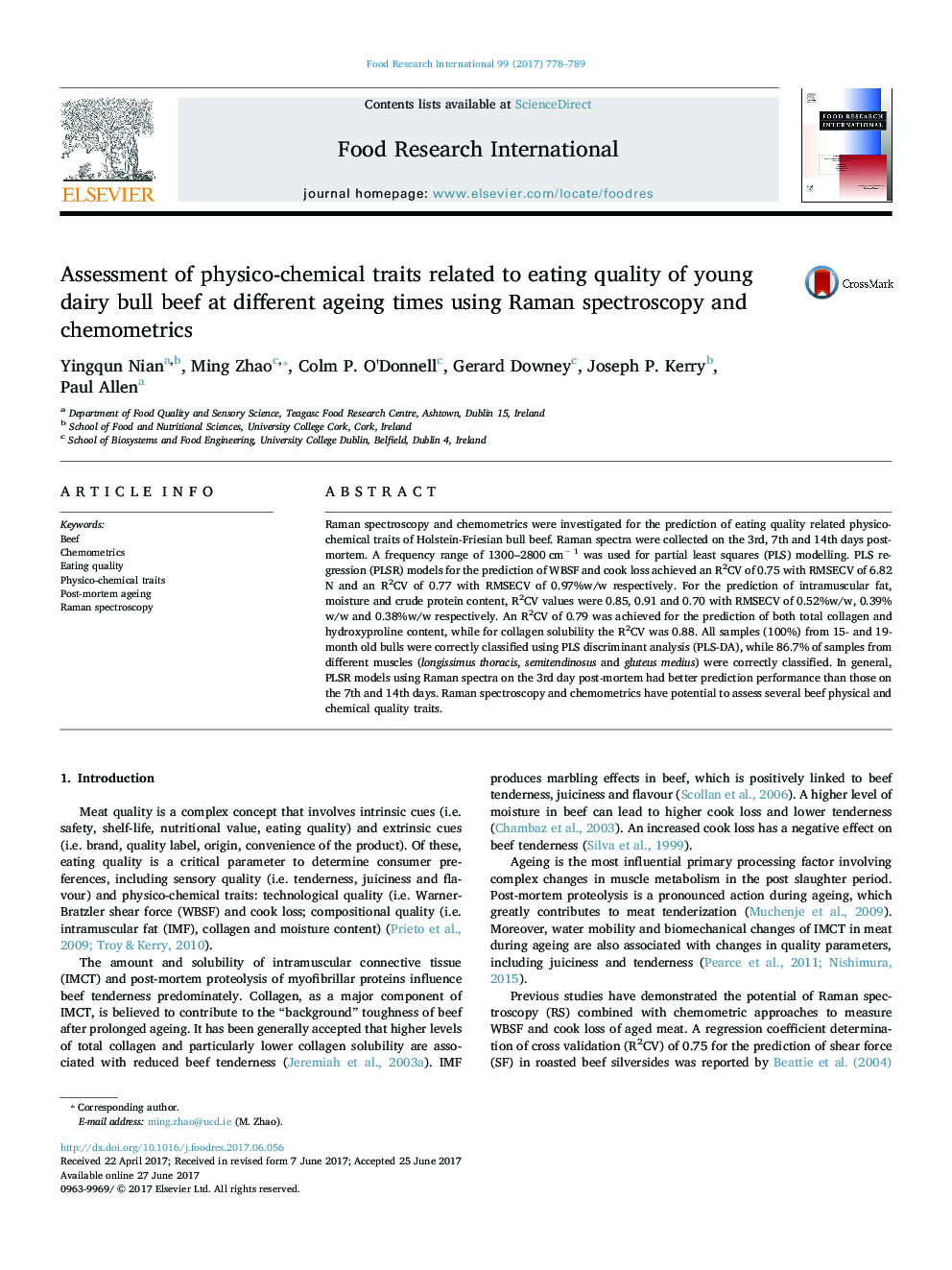| Article ID | Journal | Published Year | Pages | File Type |
|---|---|---|---|---|
| 5768156 | Food Research International | 2017 | 12 Pages |
â¢RS (1300-2800 cmâ 1) has potential to assess beef eating quality.â¢RS is capable of predicting several beef physical and chemical traits.â¢RS is capable of predicting beef collagen characteristics.â¢Chemometrics of RS can monitor beef quality during ageing.â¢PLS-DA models of RS data can discriminate different muscles and slaughter ages.
Raman spectroscopy and chemometrics were investigated for the prediction of eating quality related physico-chemical traits of Holstein-Friesian bull beef. Raman spectra were collected on the 3rd, 7th and 14th days post-mortem. A frequency range of 1300-2800 cmâ 1 was used for partial least squares (PLS) modelling. PLS regression (PLSR) models for the prediction of WBSF and cook loss achieved an R2CV of 0.75 with RMSECV of 6.82 N and an R2CV of 0.77 with RMSECV of 0.97%w/w respectively. For the prediction of intramuscular fat, moisture and crude protein content, R2CV values were 0.85, 0.91 and 0.70 with RMSECV of 0.52%w/w, 0.39%w/w and 0.38%w/w respectively. An R2CV of 0.79 was achieved for the prediction of both total collagen and hydroxyproline content, while for collagen solubility the R2CV was 0.88. All samples (100%) from 15- and 19-month old bulls were correctly classified using PLS discriminant analysis (PLS-DA), while 86.7% of samples from different muscles (longissimus thoracis, semitendinosus and gluteus medius) were correctly classified. In general, PLSR models using Raman spectra on the 3rd day post-mortem had better prediction performance than those on the 7th and 14th days. Raman spectroscopy and chemometrics have potential to assess several beef physical and chemical quality traits.
Graphical abstractDownload high-res image (292KB)Download full-size image
